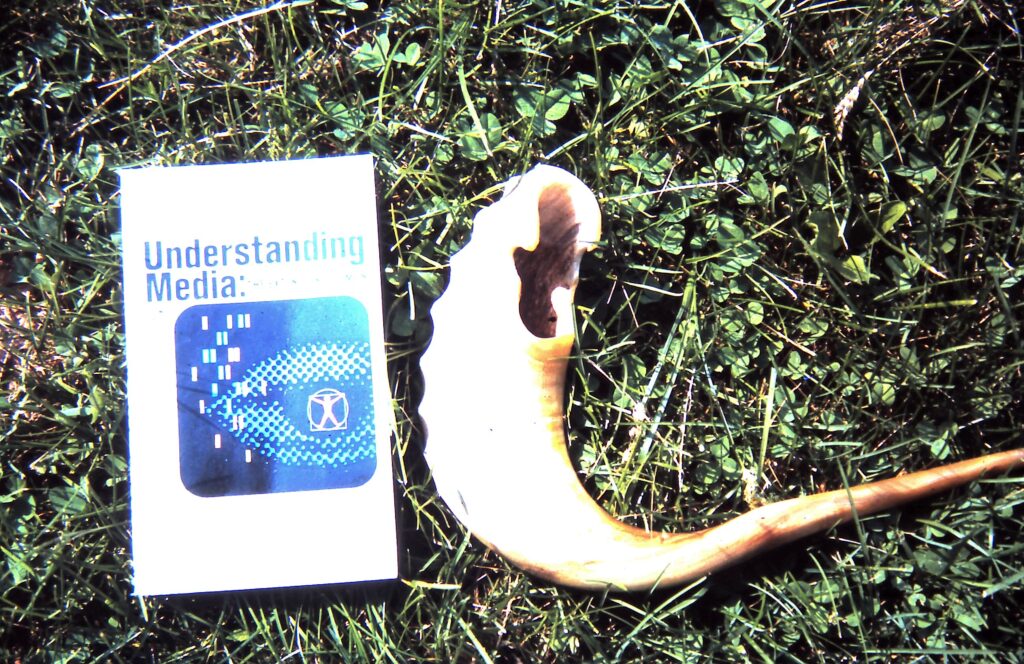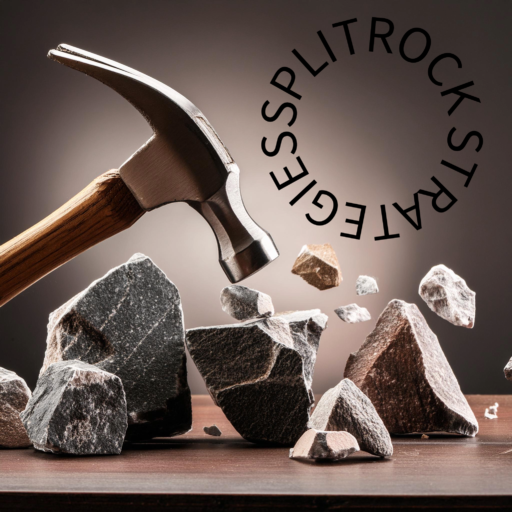
Let there (the Medium) be (is the) Light (Message)
Let There be Light – A Sermon Environment at Hebrew Union College 1970
This sermon was conceived as both a textual sermon dealing with the biblical words “let there be light” and an experiential sermon flowing from the statement of Marshall McLuhan “The Medium is the Message.” Following the basic assumption that light has become our electronic technology, the sermon was set up, or rather the sermonic environment was set up so that not only would the effect of electronic technology on us be talked about – but also be experienced through the use of five slide projectors and two video tape monitors.
The content of the slides could be divided into three areas, Jewish history and tradition, contemporary societal problems, electronic technology and its products. The video tape monitors were playing from one video recorder an approximately ten-minute informal talk by the creator of the sermon environment – it was a rather casual “Rap” rather than a tightly written talk. Underlying the talk was the music of the “Rotary Connection” singing “Turn me on.”
Because the sermon was so much based on the experience of being bombarded by the simultaneous use of all the above-mentioned equipment, it is hard if not impossible to recapture that experience on these pages.
Excerpts from the “sermon environment text experience”:
What you are experiencing (in the Beginning) right now is what McLuhan (God created the Heaven and the earth.) talks about when he says that electric circuitry (The earth was unformed) is (and void) an extension of the (and darkness was upon the) central (face of the deep) nervous system. We get and are capable (and the spirit of God hovered over the) of receiving (face of the waters) a great deal of (and God said) information, (“Let there be light”) much of which is dealt with (and there was light) unconsciously. For example, (all media) the animation of a (are extensions of) person’s body when they (some human faculty) speak tells us much about (psychic) the speaker and the relationship of the speaker to his or her own (or physical) words.
What does all this have to do with the Jews? The People of the book (is the word out?) Learning is not restricted to the textbook (Lo Hamidrash haekar eleah ha ma’aseh – study is not the thing, action is). Learning is also coping with our environment. The average (“Ayekah-where are you?”) child starting school (read religious school) has already watched more hours of television than the average college student attends in class! What values are taught on the tube? (“That we sell the poor for silver and the needy for a pair of sandals…”) What about the very learning process itself – how is it affected by this hot media?
We in the religious realm have a choice to make (“Behold I put before you this day good and evil”) do we ignore the hardware of technology as irrelevant – not religious? do we say that electronic media is evil a la Madison Avenue? or do we attempt to make the profane into sacred tools? Do we allow the light of God to blind us? or do we become partners of God by shaping this light into productive life-giving energy? (Therefore, choose life, that thou mayest live.)
Perhaps it is appropriate to close this sermon experience with the Hasidic tale of the rebbe so engrossed in his thoughts that he gets lost in the woods. After some hours of fearful darkness, the rebbe sees a torch light carried by another rebbe. Hurrying towards the most welcome stranger, the rebbe declares “I am lost, perhaps you can help me?” The other rebbe sadly remarks that he is also lost, but he goes on to say “But, my brother, perhaps we can together find our way out of the darkness, for we both know that the way we came is not the way out, let us go!”

